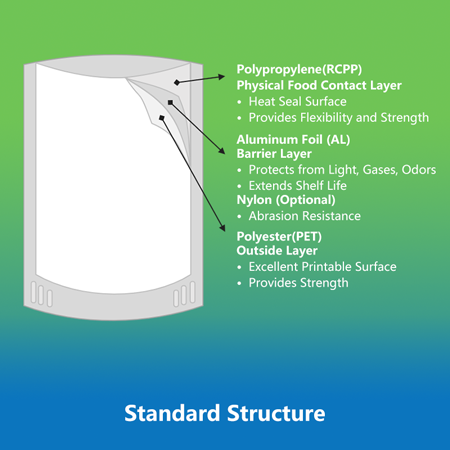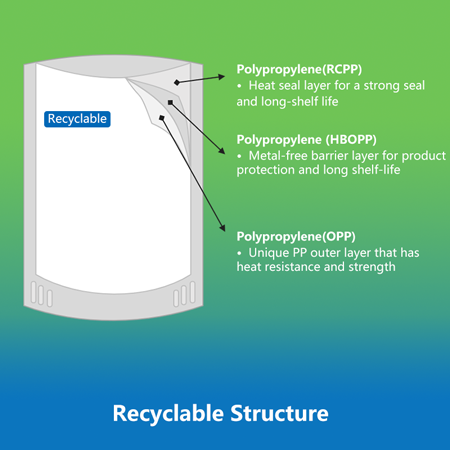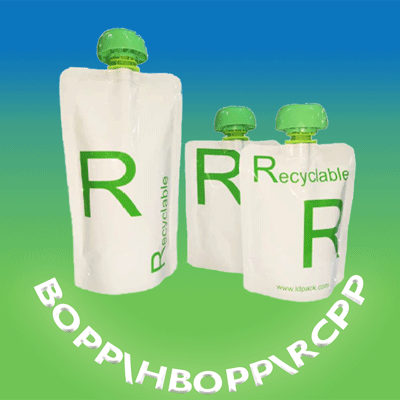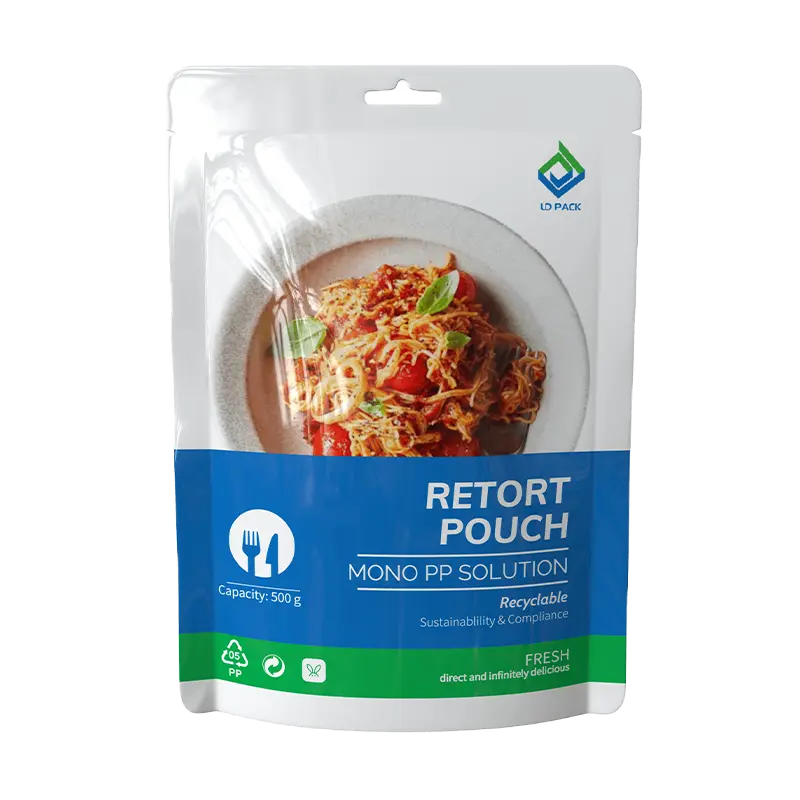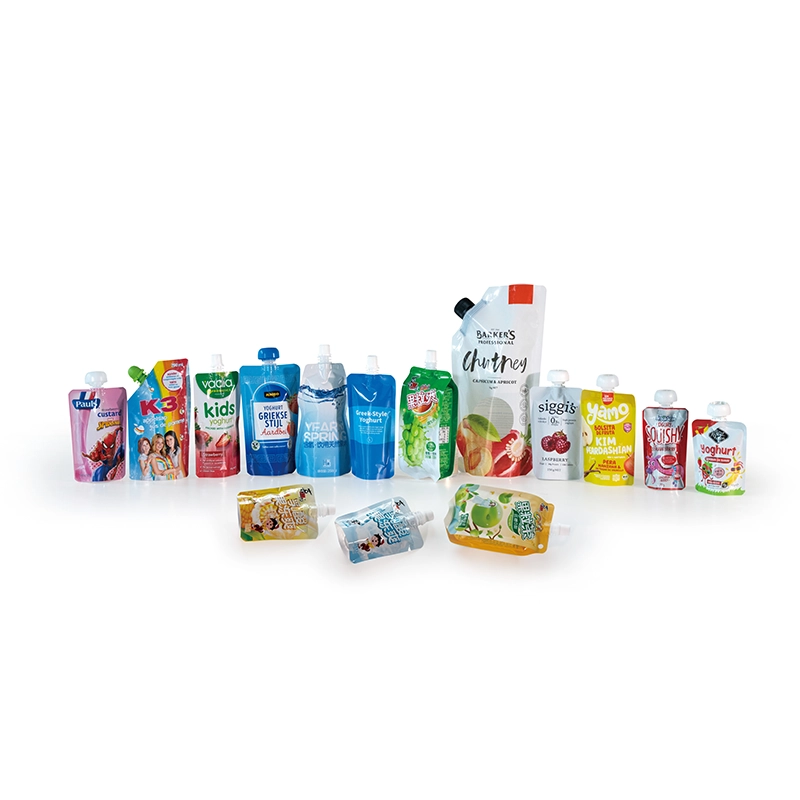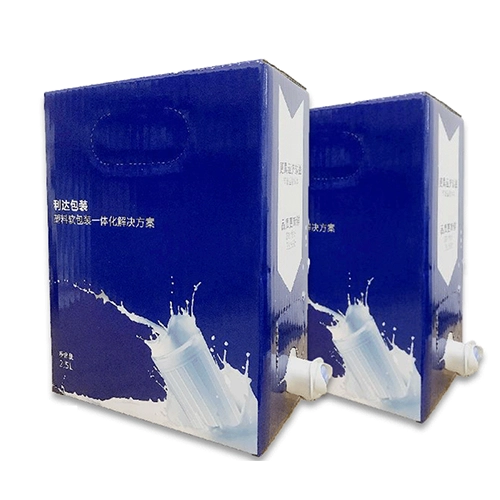Principles and Applications of Retort Pouch
(I) Basic Principles
According to the general lethal principle of microorganisms, microorganisms will inevitably suffer fatal damage in a thermal environment higher than their maximum growth temperature, and it will be aggravated with the extension of heating time until the microorganisms die.
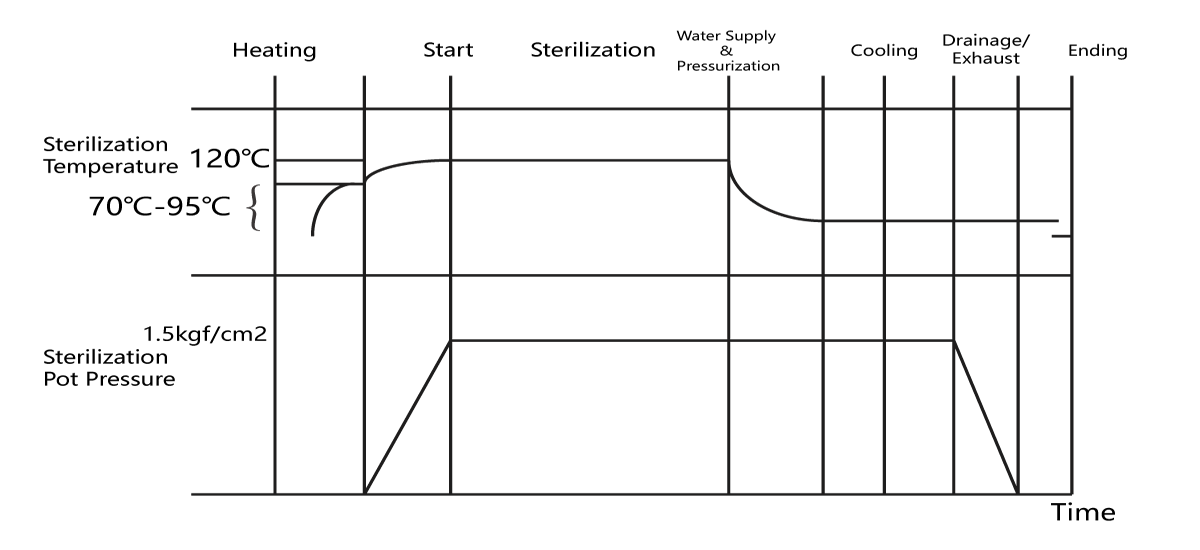
(II) High-Temperature Sterilization is the most common sterilization method, mainly divided into the following categories:
Classified by Temperature and Time:
| Classification | Classification Condition | Remarks |
| Water Boiling | Sterilized by 100℃ boiling water | Sterilizing time 30min |
| Medium temperature Retorting | Retorting sterilization below 121℃(121℃ included) | Sterilizing time 40min |
| High temperature Retorting | High temperature sterilization below 135℃(135℃ included) | Sterilizing time 30min |
2.Retort pouches, referred to "High Temperature Laminates" by the FDA in the United States, are divided into three levels:
According to FDA Standards:
| Level | Time Condition | Shelf Life of Contents |
| 121℃ Retort Pouch | Below 121℃,20-60min | Over 6 months |
| 135℃ Retort Pouch | 135℃,about 20min | 1~2 years |
| 140℃ Retort Pouch | Below 140℃,usually 2~5min | Microwave heating sterilization Within 2 years |
(III) Applications
In the food production process, there are always two cooking processes:high-temperature & high-pressure sterilization, and low-temperature & atmospheric pressure sterilization. Low-temperature sterilized meat products have a fresh and tender texture and better preservation of various nutrients due to their low heating temperature. However, they only kill pathogenic bacteria, leaving many spoilage bacteria, resulting in a short shelf life and significant losses in the distribution field.
On the other hand, high-temperature sterilized foods tend to shrink excessively due to the high heating temperature, resulting in a less desirable texture compared to low-temperature sterilized products. However, they eliminate all bacteria, extend shelf life significantly, and remove internal causes of spoilage.
High-temperature retorting is a thorough sterilization process widely used for meat, soy products, some medical supplies, and pharmaceutical injection to extend their shelf life. In recent years, this process has also been gradually applied to sterilize products like chestnuts, cereal beverages, and baby food purees. High-temperature retorting sterilization typically occurs between 121°C and 135°C. There is also research on packaging materials that can withstand super-high-temperature sterilization at 145°C. Studies have shown that maintaining the temperature at around 145°C for approximately 3 minutes can thoroughly eliminate heat-resistant pathogenic bacteria. This has led to widespread use of composite packaging materials for this purpose.
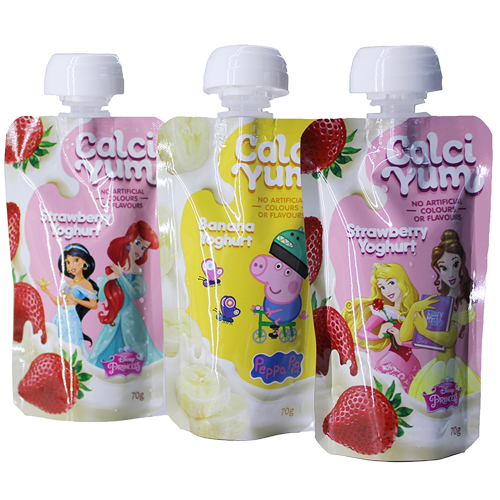
Based on the sterilization conditions of the packaging contents, this article primarily discusses the design and processing techniques of packaging pouches that can withstand temperatures of 121°C. The design of composite packaging materials must meet the requirements of high-temperature sterilization processes. Several factors need to be considered, including the functionality of the packaging material during production, the requirements of the contents, the sterilization process conditions, storage conditions, and the impact of packaging material performance in the sales and use phases.
In the 1960s, the United States invented aluminum-plastic composite films to package meat products for long-term storage at room temperature through high-temperature and high-pressure sterilization, extending the shelf life to over a year. Aluminum-plastic composite films, also known as flexible cans, are soft, lightweight, and serve a role similar to canned containers. For long-term storage of meat products at room temperature, options include using rigid packaging containers, tin cans, and glass bottles. However, for soft packaging, almost all use aluminum-plastic composite films.
Aluminum-plastic composite films consist of multiple laminated layers, typically three layers, with a typical structure of the surface layer/adhesive/aluminum foil/adhesive/heat-sealing layer (CPP). These packaging films are used widely with advantages such as an attractive appearance, excellent mechanical properties, high barrier, high-temperature resistance, and good hygiene. However, they also have some disadvantages, including the hardness and brittleness of aluminum foil, which is not as flexible as plastic films. The plastic film used for high-temperature retort pouches must meet the requirements of retorting conditions and content features, to determine the selection, specifications, combinations of materials, types of inks, adhesives, etc. Common plastic film materials include BOPET, BOPA, HDPE, RCPP, AL, co-extruded EVOH, co-extruded PVDC, and co-extruded PE etc. There are also multi-layer co-extruded films with five or more layers, such as PP/Tie/EVOH/Tie/PP and PP/Tie/PA/EVOH/PA/Tie/PP. In addition, there are co-polyamide MXD6 and ceramic vapor-deposited films like SiOxPET12. However, due to technical and cost constraints, the application of multi-layer co-extruded films and ceramic vapor-deposited films in high-temperature retort pouches is not yet widespread.

Initially, LD Pack's high-temperature retort pouch were developed in accordance with GB/T10004-1988 standards, which included only one material structure: PET/AL/CPP for cooking conditions limited to 121°C for 40 minutes. Ten years later, it was revised to GB/T10004-1998 "Retort Composite Films and Bags," which expanded the material structure to include PET/CPP, PA/CPP (two-layer transparent types), PET/AL/CPP, PA/AL/CPP (three-layer opaque types), and PET/PA/CPP (three-layer transparent types), as well as PET/ALPACPP (four-layer opaque types). Physical and mechanical properties of the products were enhanced by adding resistance to media, peel strength and heat-sealing strength after cooking as performance indicators, while the original oil resistance indicator was removed to emphasize the product's practicality in withstanding high-temperature retorting. After another revision in 2002, high-temperature retort pouch were incorporated into the latest standard, "General Principles for Packaging Composite Films and Bags."
Stand-up Retort Pouch
Facts:
● ≥95% PP Based packaging
● High barrier PP film
● No metallic aluminum, OTR≤0.5
● Hot fill or pasteurization
● Retortable 125℃
Applications:
● Tuna, sauce, wet pet food

